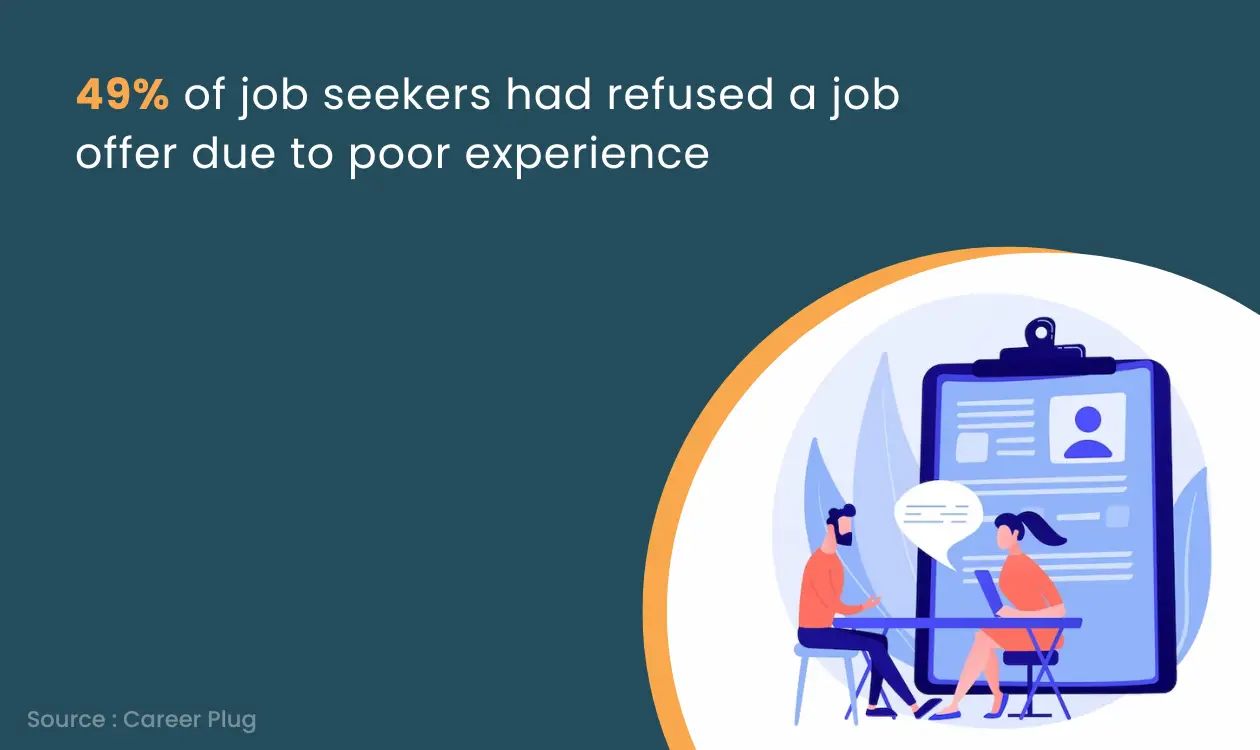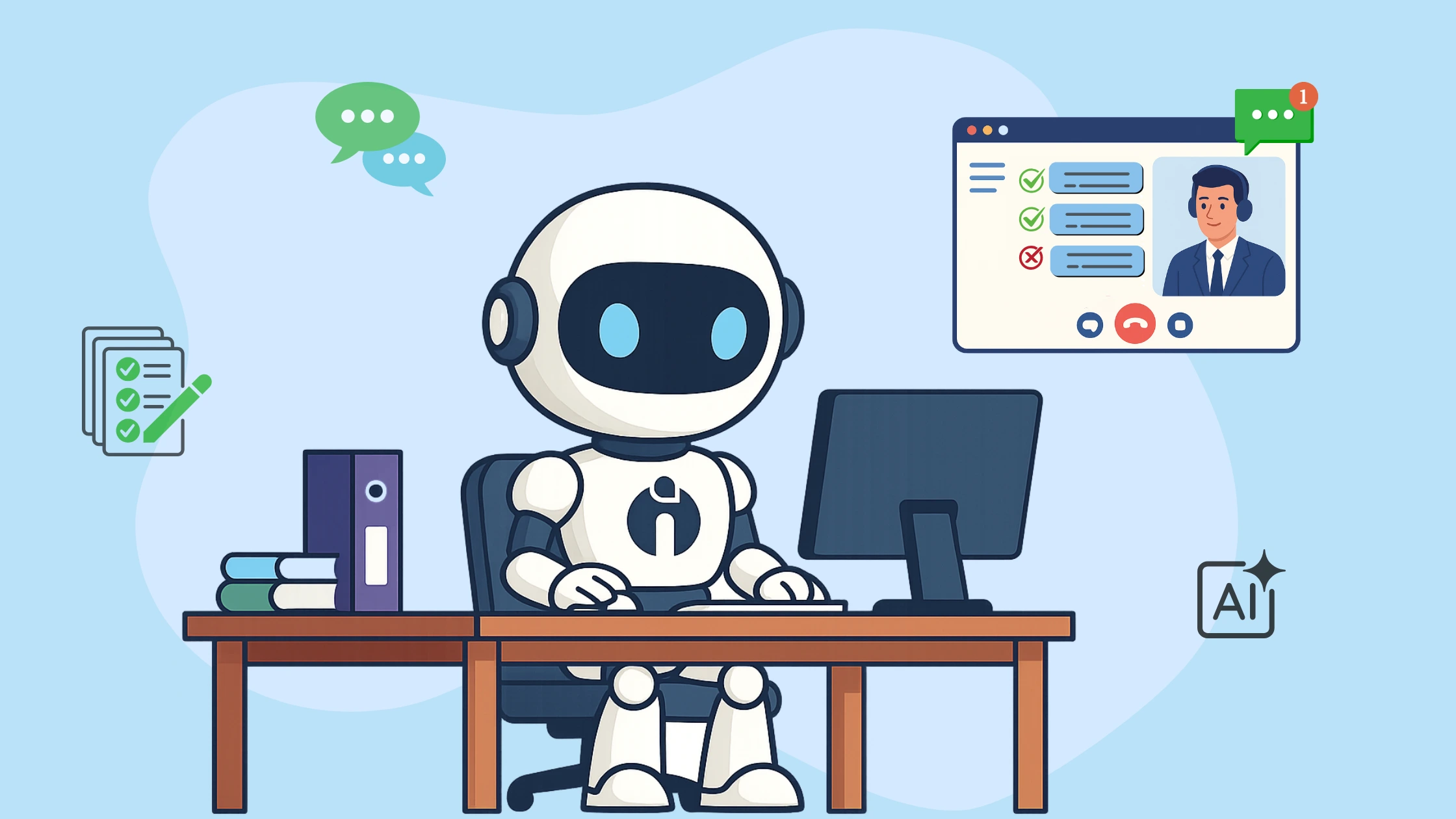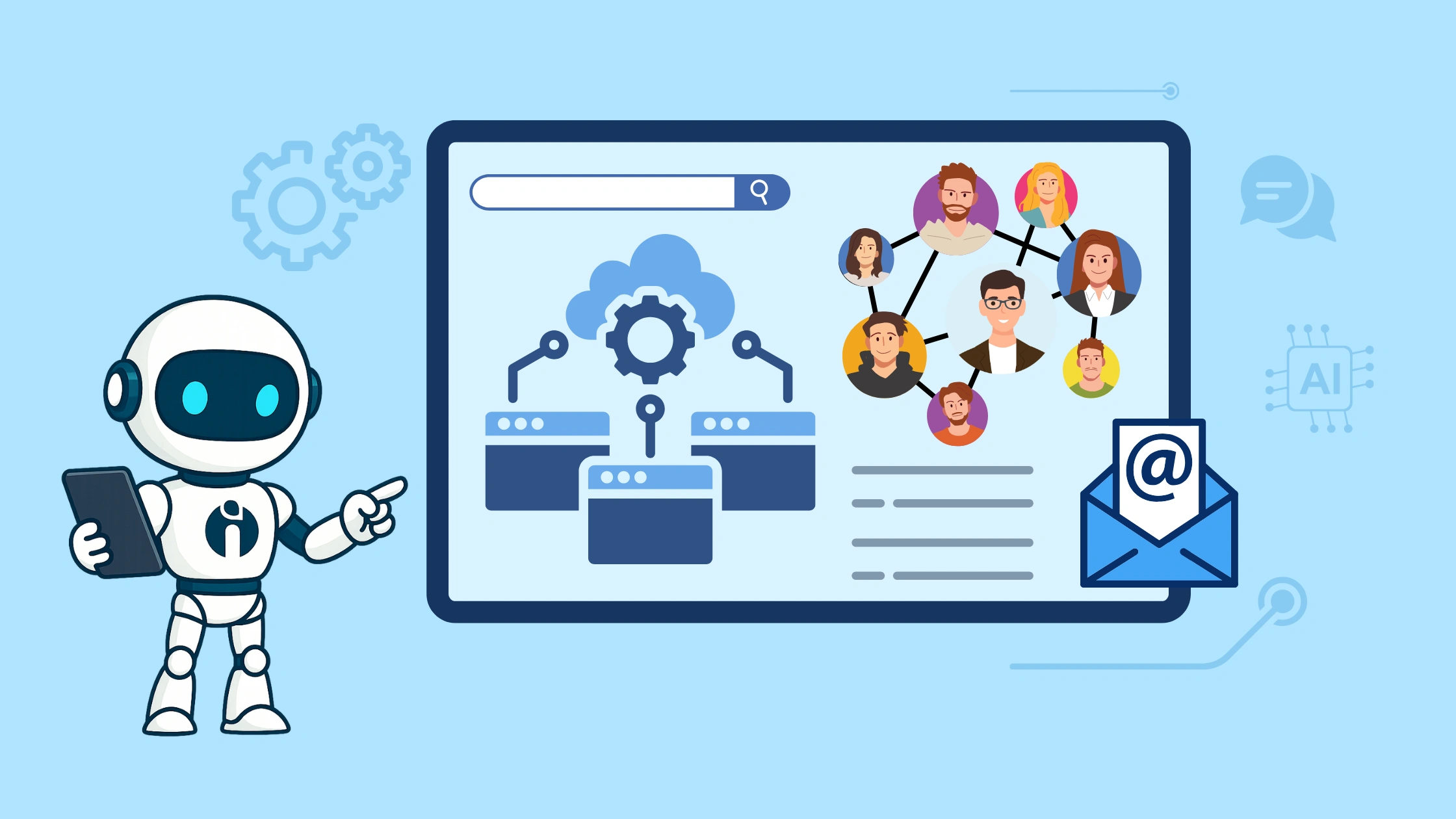TL;DR
- Proactive recruitment involves preparing and building a talent pool ahead of hiring needs, improving candidate experience and reducing hiring time and cost.
- Reactive recruitment deals with immediate hiring demands, offering flexibility and quick response but may cause prolonged vacancies and increased pressure on staff.
- Proactive methods provide better company culture, lower cost-per-hire, and increased reach to top candidates.
- Reactive recruitment, while simpler, risks lower quality hires and higher cost-per-hire due to urgency.
- Both recruitment styles have disadvantages; proactive recruitment can be resource-heavy and challenging to maintain candidate engagement, whereas reactive recruitment can lead to rushed and suboptimal hiring decisions.
- A balanced approach combining proactive and reactive strategies optimises recruitment effectiveness based on organisational needs.
Your current recruitment strategy is responsible for shaping the identity of your company's workforce. Is it a quality recruit or a hire in a hurry; it all depends on how you plan for your recruitment workflow.
Proactive and reactive recruitment are the two distinct ways of responding to a talent acquisition demand. Even before a hiring need occurs, proactive recruitment focuses on finding, connecting with, and attracting applicants. While finding new employees for positions that have just opened up is what we call Reactive recruitment.
There is only a ten working days difference for an available top candidate to get hired by agencies. Thus, if you want the best resources for your company, you should understand what fits your organisational demands the best. Is it Proactive or Reactive recruitment; Let's find out in this blog.
What is Proactive Recruitment?
So, basically, what is Proactive recruitment? The process of finding, interacting with and attracting job candidates before you need them is known as proactive recruiting.
In proactive recruitment, you actively seek candidates to create a talent pool from which to choose when you need to fill a vacancy. Interviewing candidates for a position that is not vacant yet may seem arbitrary, but doing so adds a layer of communication between recruiting managers and potential employees.
What is Reactive Recruitment?
Instead of preparing for future needs, reactive recruitment meets an immediate need for labour. It is the most basic and conventional method of recruitment. The idea of reactive hiring is demand-based and hence, is more pressurising and disorganised. The hiring process initiates only after an internal invitation for a replacement employee has been made. Employers face excessive time pressure to find and acquire the best talent for the position because of the urgency of filling the job vacancy.
Proactive Recruitment Measures
A survey revealed that more than 70% of candidates passively look for jobs (HR Cloud). It means they are interested in chances but aren't actively looking for or applying for jobs. Hence, it makes sense for recruiters to engage with prospects proactively and anticipate recruiting needs, given the length of the hiring process and the cost per hire that are both increasing. The following measures will surely help in your proactive technical recruitment planning:
-
Give priority to market inspection. Understand current trends and market requirements.
-
Conduct interviews considering the future needs of the company.
-
Re-evaluate: What is required, what may be changed, and what can be removed?
-
Keep an eye on the progress and activities of the business.
-
Try selling the firm's potential and employer branding image to job seekers.
Reactive Recruitment Measures
Reactive recruitment practices are exclusively focused on filling vacancies and are not structured before the requirement and hence rarely end with top talents. Even though the labour market can be uncertain at times, building a team completely based on staffing needs is unlikely to result in resource generation for the company. However, the following measures can be quick fixes for rushed hirings:
-
Observe the market trends in short-term employment.
-
Perform reviews and re-examine poor health and sickness excuses.
-
Keep a check on headcounts. Notice whether it is increasing, decreasing, or freezing.
Proactive Recruitment Strategies
The ideal proactive recruitment strategy might differ depending on several variables, including the industry, the required jobs, and the team size. However, there is a set of active candidate sourcing techniques that you can implement. Here’s what you need to do:
-
Find the best talent sources by working with hiring teams. Online posts, creating a particular database within the company, or word-of-mouth advertising could all be used for sourcing quality talent.
-
Contact the top candidates on your shortlist for an interview. Learn about your candidates' strengths before deciding whether they fit the required characteristics.
-
Continue engaging with potential candidates. Make sure to stay in touch with them by phone, email, or any other social platform to let them know you haven't forgotten about them.
-
Invite potential hires to apply so they can join the team. Outline the advantages they will gain and how your staff can assist them in achieving their professional objectives. This way, organisations effectively achieve recruitment goals and objectives faster.
-
Provide a better applicant experience and lessen the candidate's effort. Ask only for information that is truly necessary rather than making them complete a lengthy application.
Benefits of Proactive Recruitment
1. Improved Candidate Experience
A proactive recruiting process is beneficial as it fosters communication and nurturing. The prospects may be more open about what they're searching for in a career and why the role/company is or isn't a good fit, this nurturing factor provides a better candidate experience.
2. Time Reduction
Proactive recruitment is something that is done all year round. The time-consuming process of creating job descriptions, posting them on job boards, and evaluating resumes is reduced. It allows you to drastically reduce your time to hire by putting the best prospects in front of you before you need to fill the position.
3. Increased Candidate Reach
Knowing your potential candidates is beneficial for long-term goals. Proactive recruitment lets you emphasise the best applicants by avoiding hasty or subpar hires. It provides you plenty of time to investigate potential hires, look over their work histories, and talk with them about their prior experiences and expectations for future responsibilities, enabling you to assemble the greatest team possible.
4. Reduced Cost-per-hire
Proactive recruiting saves you money because it often eliminates the requirement for a bonus or incentive for hiring. When one of your team members leaves, your income and morale may suffer. Not only does it affect your bottom line, but it can also demotivate employees because of excessive work pressure. However, proactively recruiting candidates saves you and your finances from this hassle.
5. Better Company Culture
Hiring managers and recruiters have more time to know candidates when the hiring process followed is Proactive. If candidates evaluate the company's principles and company culture before making a decision, this may help improve staff retention. Your team will be happier and perform better as a whole if you proactively hire the best applicants.
Benefits of Reactive Recruitment
Reactive recruitment is a common approach where companies start looking for candidates after a position becomes vacant. Here are some benefits explained simply:
-
Immediate Need Fulfillment: When a role unexpectedly opens up, it allows you to quickly focus on filling that vacancy, ensuring minimal disruption to your team's workflow.
-
Flexibility: This method offers flexibility, as you only recruit when there's an actual need, helping manage recruitment costs effectively.
-
Updated Requirements: Each time you recruit, you can adjust the job specifications based on the most current needs of your organisation, ensuring the new hire meets the precise requirements of the role.
-
Simplicity: It's a straightforward approach. You identify the gap, and you fill it, which is simpler and sometimes faster than maintaining a pool of potential candidates.
-
Budget-Friendly: By hiring only when necessary, you potentially reduce ongoing recruitment costs and focus your resources on immediate needs, which can be more budget-efficient.
-
Quick Response to Sudden Changes: If there’s an unexpected resignation or a new project that needs more hands, reactive recruitment lets you adapt quickly. You can immediately start looking for candidates to fill those gaps without a long planning process.
This style of recruitment might be reactive, but it can be just what you need in times of unexpected departures or rapid changes within your company.
Disadvantages of Proactive Recruitment
Proactive recruitment, where you plan ahead and build a pool of candidates before positions become available, has its downsides:
-
Resource Heavy: It requires a lot of resources, both in terms of time and money. You’re always on the lookout, always engaging potential candidates. This can be a drain, especially for smaller businesses with limited HR capabilities.
-
Potential for Disengagement: Keeping candidates engaged over long periods without immediate job openings can be challenging. If they feel like they're in a holding pattern, they might lose interest and move on to other opportunities.
-
Overestimating Needs: You might end up recruiting for positions you predict will open up, but what if those positions don’t materialise? This can lead to wasted efforts and possibly even having to let go of great candidates or, worse, hiring for roles you don't actually need.
-
Bias Toward "Ideal" Candidates: There's a risk of focusing too much on what seems like the perfect fit in terms of skills and culture alignment, potentially overlooking good candidates who might bring fresh perspectives or grow into the role.
It's about finding the right balance between being prepared and being adaptable. Sometimes, you need to mix proactive strategies with reactive approaches to cover all bases effectively.
Disadvantages of Reactive Recruitment
1. Prolonged Vacancy
Reactive recruitment has an increased possibility of positions remaining vacant for an extended period. Given the current status of the labour market, there are jobs available, but quality talent is hard to find. Moreover, candidates often feel hesitant to have job shifts unless they are offered better opportunities and pay than their current jobs.
2. Excessive Pressure on Existing Staff
You may face the possibility of overworking your current team, in a few cases tripling workloads, or holding back the advancement of younger staff. Also, some tasks might be overlooked or given to other team members during the period of searching for the right candidate for the position, and thus, others might end up feeling overburdened.
3. Not Getting Quality Talent
When in a vulnerable situation, it's possible to grab the first person you see and move quickly through the process to get them on board. This may result in failed probationary periods, a bad team fit, or even a misalignment between the candidate's skill set and the requirements of the position.
4. Time-Consuming
Reactive hiring requires a lot of time. It typically takes 6 to 12 weeks to complete the hiring process, from posting the job opportunity to extending an offer, depending on the employment opportunity and the expertise and abilities required.
5. May Increase the Cost per Hire
To address their urgent needs, corporations might even have to spend a lot of money hiring contract workers. The pressure to fill the vacancy may lead to poor recruiting choices and can also result in increased hiring costs.
Difference Between Proactive and Reactive Recruitment
To summarise it all, here's a three-point difference between Proactive and Reactive recruitment.
-
Proactive recruitment is preparing for vacancies ahead of time. On the other hand, reactive recruitment is dependent on execution when the necessity of filling a vacant position arises.
-
In proactive recruitment, you already have a talent pool of qualified candidates willing to join your organisation. It increases candidate retention and improves the candidate experience. However, with reactive recruitment, the vacancy usually remains unfilled for a prolonged time, creating loss situations for the firm.
-
When you proactively monitor the recruitment workflow of your firm, it reduces the overall hiring time and cost to hire, whereas relying on reactive recruitment builds pressure and increases the chances of poor hiring.
Which is Best, Proactive or Reactive?
In Closing, it's evident that proactive hiring is the ideal method every company should follow to meet the talent acquisition demands of the firm. It enables recruiters to connect with the best people across all industries at less investment, reduced hire time, and improved communication. Several industrial proactive recruitment examples suggest leaving the regressive hiring method and moving forward with more planned and well-executed recruiting methods for smooth recruitment workflow.
FAQs - Frequently Asked Questions
What is the main difference between proactive and reactive recruitment?
Proactive recruitment involves building a talent pool before vacancies arise, while reactive recruitment addresses immediate hiring needs after a position becomes vacant. This helps in reducing hiring time and improving candidate quality.
How does proactive recruitment improve candidate experience?
By engaging candidates early and maintaining communication, proactive recruitment fosters a better relationship and understanding, which leads to more positive experiences for potential hires throughout the process.
What challenges might companies face with reactive recruitment?
Reactive recruitment can lead to pressure-filled decisions, prolonged vacancies, and possibly poor hiring choices since the process starts after urgent demand, reducing time for thorough candidate evaluation.
How can iSmartRecruit help in recruitment strategies?
iSmartRecruit offers tools to streamline both proactive and reactive recruitment processes, helping organisations manage candidate pools efficiently, reduce time to hire, and improve overall recruitment workflows.
When should a company use reactive recruitment?
Reactive recruitment is helpful for sudden staffing needs or unexpected vacancies, where quick hiring is necessary to maintain business continuity, though combining it with proactive methods is ideal for best results.

















